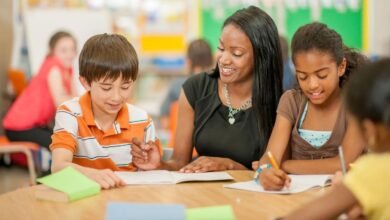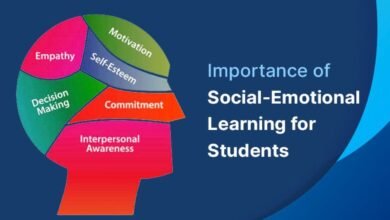How to Create Engaging Learning Experiences

Creating engaging learning experiences is a critical goal for educators, trainers, and instructional designers. Whether in a classroom, online, or corporate training environment, the quality of learning is deeply influenced by how engaging the material is for learners. Engaging learning experiences can motivate students, improve retention, and foster a deeper understanding of the subject matter. This article explores various strategies and methods for creating engaging learning experiences, emphasizing active learning, technology integration, collaborative approaches, and real-world application.
Understanding the Importance of Engagement in Learning
Before diving into strategies, it’s essential to understand why engagement is so crucial in learning. Engagement in education refers to the degree of attention, curiosity, interest, and passion that students show when they are learning. It’s not just about keeping students busy or entertained; it’s about involving them in the learning process in a meaningful way. When learners are engaged, they are more likely to process information effectively, think critically, and retain knowledge. Engaged learners are active participants in their education, which helps them to develop a love for learning and build skills that are useful beyond the classroom.
Engagement also plays a significant role in accommodating different learning styles. Traditional teaching methods often cater to a narrow set of learners, primarily those who excel in lecture-based, note-taking environments. However, by incorporating diverse engagement strategies, educators can reach a broader spectrum of students. This inclusivity ensures that learning is accessible and effective for individuals with varying needs and preferences.
Active Learning: A Key to Engagement
Active learning is a strategy that involves students in the learning process directly, as opposed to passively receiving information from an instructor. This method has been shown to improve understanding and retention by encouraging learners to engage with the material actively. Examples of active learning techniques include discussions, problem-solving, case studies, role-playing, and hands-on activities.
Implementing active learning requires careful planning and a shift from traditional teaching methods. Instructors should aim to create a balance between instruction and interaction. For example, a lecture might be broken up with small group discussions, allowing students to process and apply what they have learned immediately. Problem-based learning (PBL) is another effective technique, where students are given real-world problems to solve, encouraging them to apply their knowledge in practical contexts.
Moreover, active learning fosters a collaborative environment where students learn from one another. Peer teaching and group projects are particularly beneficial in this regard. When students explain concepts to their peers or work together to solve a problem, they deepen their understanding and develop critical soft skills like communication, teamwork, and leadership.
Integrating Technology to Enhance Learning
Technology has transformed the educational landscape, providing new opportunities for creating engaging learning experiences. Digital tools and platforms can make learning more interactive, personalized, and accessible. The integration of technology in education should not be about using gadgets for the sake of it but about enhancing the learning experience and making it more engaging.
One way to use technology effectively is through the use of multimedia. Videos, podcasts, animations, and interactive simulations can make complex concepts more understandable and engaging. For instance, a biology lesson about cell division can be brought to life through an animated video that shows the process in a visually stimulating way, making it easier for students to grasp.
Another powerful technological tool is the use of gamification in education. Gamification involves applying game design elements, such as point scoring, leaderboards, and badges, to educational activities. This approach taps into the natural human desire for competition and achievement, making learning more fun and engaging. Online platforms like Kahoot!, Quizlet, and Duolingo use gamification to motivate learners and track progress.
Additionally, technology can facilitate personalized learning experiences. Adaptive learning platforms use algorithms to adjust the content and pace of learning based on the student’s performance, ensuring that each learner receives the right level of challenge. This personalized approach not only keeps students engaged but also helps them progress at their own pace, fostering a sense of autonomy and mastery.
Creating a Collaborative Learning Environment
Collaboration is a crucial element in fostering engagement in learning. When students work together, they learn to communicate their ideas, listen to others, and negotiate solutions. Collaborative learning encourages a sense of community and support among learners, which can be particularly beneficial in maintaining motivation and engagement.
To create a collaborative learning environment, educators can employ strategies such as group projects, peer reviews, and collaborative problem-solving activities. Group projects allow students to work together to achieve a common goal, which requires them to share responsibilities, manage time effectively, and leverage each other’s strengths. Peer reviews enable students to provide feedback on each other’s work, fostering critical thinking and self-reflection.
Using collaborative tools and platforms can further enhance this process. Digital tools like Google Workspace, Microsoft Teams, and Slack allow students to work together in real time, even if they are not physically present in the same location. These platforms also offer various functionalities like document sharing, video conferencing, and project management, which can facilitate seamless collaboration and communication.
Furthermore, collaboration can be encouraged through discussion forums and social learning platforms. These platforms provide a space for learners to share ideas, ask questions, and discuss topics outside of the formal classroom setting. This kind of social learning can make the learning experience more dynamic and engaging, as students learn not only from the instructor but also from their peers.
Real-World Application and Relevance
One of the most effective ways to engage learners is by making the content relevant to their lives and future careers. When students see the direct application of what they are learning to real-world scenarios, they are more likely to be motivated and engaged. Educators can achieve this by incorporating real-world examples, case studies, and practical applications into their teaching.
For example, a business class could analyze case studies from actual companies to understand the application of theoretical concepts in real-world situations. Similarly, a science class could involve lab experiments that allow students to apply their knowledge in a controlled environment. In a history class, discussing historical events in the context of current social or political issues can make the material more relevant and engaging.
Moreover, project-based learning (PBL) is an excellent approach to making learning relevant. PBL involves students working on a project over an extended period, which requires them to apply various skills and knowledge areas. This method not only enhances engagement but also helps students develop critical thinking, problem-solving, and research skills. The key to successful PBL is to choose projects that are meaningful and relevant to the students’ interests and future aspirations.
Encouraging Reflection and Self-Assessment
Reflection and self-assessment are powerful tools for engagement and deeper learning. Encouraging students to reflect on what they have learned helps them to consolidate their knowledge and make connections between new and existing knowledge. Self-assessment allows students to evaluate their understanding and identify areas for improvement, fostering a growth mindset.
Instructors can encourage reflection by incorporating reflective writing assignments, journals, or discussion prompts into the curriculum. For example, after completing a lesson, students could be asked to write a brief reflection on what they found challenging, what they learned, and how they might apply the knowledge in the future. This practice helps students internalize their learning and recognize their progress over time.
Self-assessment can be facilitated through tools such as rubrics, checklists, and self-grading quizzes. Providing students with clear criteria for success helps them understand what is expected and encourages them to take ownership of their learning. Self-assessment promotes metacognition, the awareness of one’s thinking processes, which is crucial for developing independent and lifelong learners.
Building a Positive and Supportive Learning Environment
A positive and supportive learning environment is fundamental to student engagement. When learners feel safe, respected, and valued, they are more likely to participate actively and take risks in their learning. Creating such an environment involves building strong relationships, establishing clear expectations, and fostering a sense of belonging among students.
Educators can build positive relationships by showing genuine interest in their students’ lives, listening actively, and providing constructive feedback. Establishing clear expectations from the outset helps create a structured and predictable environment where students know what is expected of them. This clarity reduces anxiety and allows students to focus on their learning.
Additionally, fostering a sense of belonging is crucial for engagement. Students who feel connected to their peers and instructors are more likely to be motivated and engaged. This sense of community can be nurtured through team-building activities, group discussions, and collaborative projects. Recognizing and celebrating diversity within the classroom also contributes to a positive learning environment, where all students feel valued and included.
Conclusion
Creating engaging learning experiences requires a multifaceted approach that combines active learning, technology integration, collaboration, real-world application, reflection, and a supportive environment. By understanding the importance of engagement and implementing these strategies, educators can enhance the learning experience, making it more meaningful and effective for all students. Engaging learning experiences not only improve academic outcomes but also foster a lifelong love for learning, preparing students for future success in an ever-changing world.



